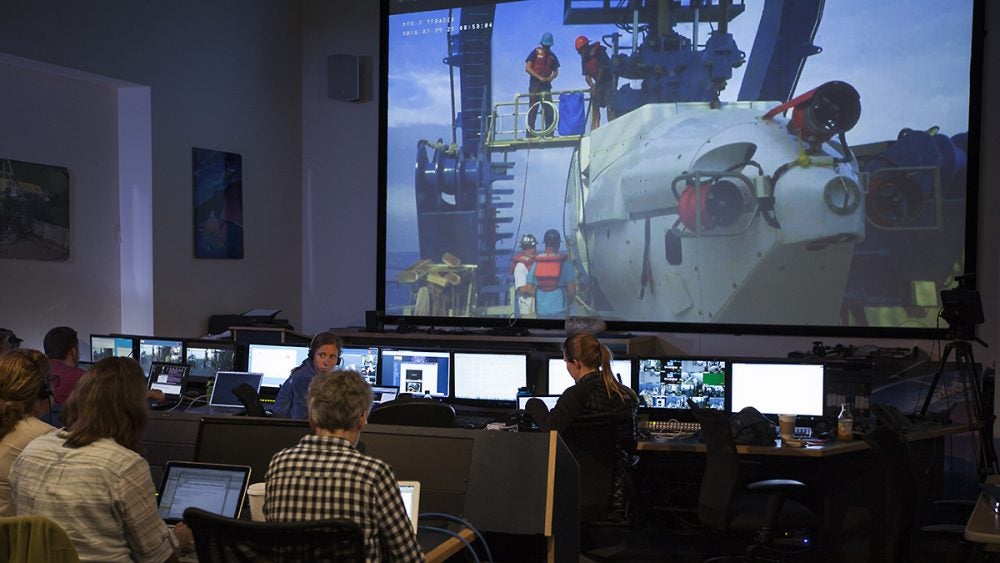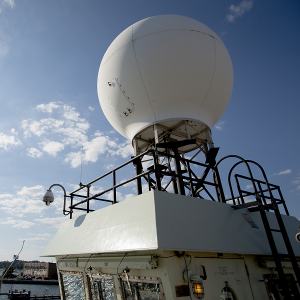Far from port and far below the surface, an oceanographic research expedition gathers precious data. Historically, the delay in bringing observations to the surface, then home, was measured in hours, days and weeks. Today, with technology like fiber optics, satellite communications and broadband streaming, that delay can be measured in nanoseconds. A near-instantaneous flow of data from the deep is eliminating barriers of time and place. Scientists and engineers positioned around the globe are as integral to oceanic expeditions as if they were standing on deck.

NSF expects science teams to grow and diversify as more, and more qualified, investigators collaborate on intricate research and multifaceted analysis. Large-scale collaborations are forming in response to the call for interdisciplinary solutions to complex, global challenges. Therefore, RCRVs must provide a continuous data-collection system that can link scientists anywhere to high-quality data in real time. And they must accommodate shoreside experts as never before.
Grappling with Resource Limitations
The scientific outputs of oceanographic research vessels is inherently constrained by limited berthing space (people living aboard), finite cruise duration, intermittent connectivity, and diminished networks for computational, technical, and social support. These resource limitations can impede the efficiency of scientific operations. To mitigate limitations and to realize the intent of NSF’s design directive (more data per dollar), data/telepresence systems are integral to the new RCRV.
Anticipating Needs and Standards
Complicating the challenge of limited shipboard resources, oceanographers generate large volumes of data and exchange a wide array of data types. Moreover, modern expeditions often employ remotely and autonomously operated vehicle systems, which multiplies the technical and scientific expertise required by a project.
To meet an increasing demand for high-bandwidth, near-instantaneous transmission of data, the ship’s designers understood that data-handling infrastructure must be fast, voluminous and robust. And, as the RCRVs are slated to join the U.S. Academic Research Fleet in a few years, “fast, voluminous and robust” will be defined by the standards of 2025 and beyond.

Following are a few ways in which data-handling infrastructure anticipates performance needs 10 to 15 years from now:
- The most prominent data/telepresence feature is twin satellite radomes installed above the bridge. Inside, dual antennas will work in concert to provide uninterrupted service. Two dishes can overcome obstructed lines-of-sight to satellites and back up each other in case of equipment failure.
- The antennas can also track Low- and Near-Earth-Orbit satellite networks. Highly anticipated LEO/NEO satellites, still on the drawing board, are due to be launched and come online in about five years.
- Satellite communications systems will be compatible with Ka-band networks. Maritime Ka-band service is expected to increase and coverage will become global when new satellites are launched by 2022.
- Computing and satellite communications hardware will be permanently installed in two dedicated data centers. By concentrating the location of these electronics, the ship’s crew can better support 24/7 data/telepresence operations.
- Data cables can sustain transmission speeds of 10 gigabits-per-second (Gbps) 100% of the time with an installed mix of single-mode fiber optic and category 7 wire. This order of high-bandwidth data flow will become standard in next-generation technology.
Shoreside Control
As part of science operations, ships using data/telepresence technology transmit information to specialized “mission control” centers on shore. High-bandwidth video, audio, and data signals are received and decoded by facilities like the Inner Space Center at GSO, then content is displayed and disseminated in real time. The center completes the communications loop by transmitting input from collaborators and observers back to the ship.
In a Nutshell…
Shipboard data/telepresence systems, coupled with satellite communications and the Internet’s reach, are helping scientists transcend the physical limitations of research at sea. The systems’ core mission is to facilitate exchanges of observation data, in order to leverage off-vessel capabilities (both human and computational) and enhance the ability of shoreside scientific parties to observe and participate in real time.
